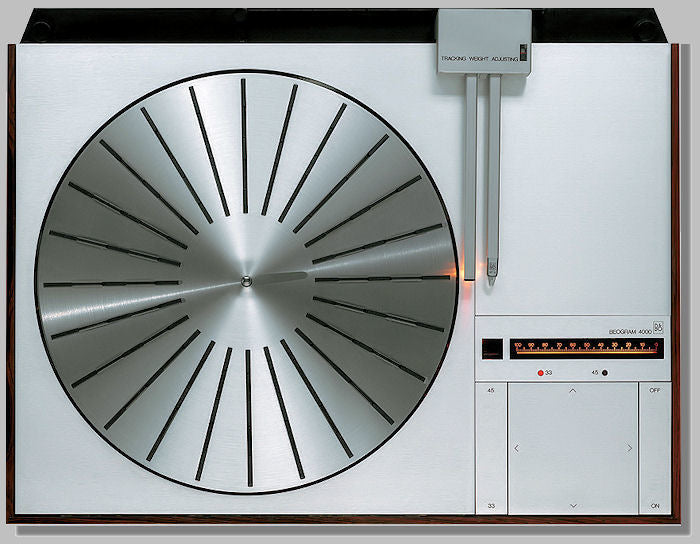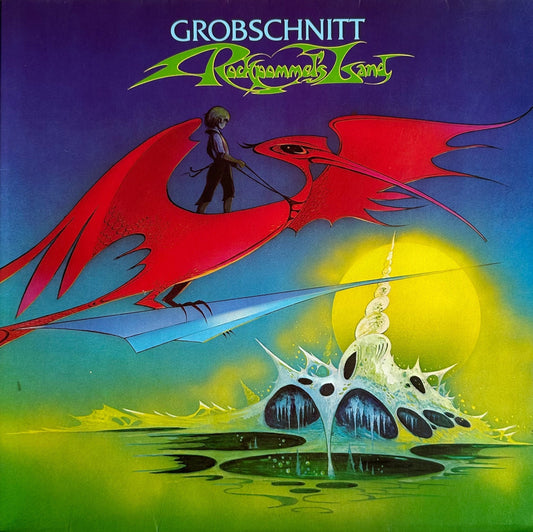I’ve spent half a century immersing myself in the history of recorded sound. Recently I’ve had to go back to the very beginning and start over: I’m in the process of developing a podcast on the history of recorded music. I’ll keep you apprised of when it will go live.
Starting from scratch, what has jumped out at me is that this didn’t all start with Edison and Berliner…which is the place where the histories generally begin. As is the case of most histories, they leave out the tangled, untrackable beginnings involving the poor schlubs who were aced out by superior legal firepower, or by “historians” who like to keep things simple for the sake of textbooks, product literature, company histories, whatever. When it comes to recorded music, don’t think late 19th century—think, oh, the 9th.
That’s right: the NINTH century. A thousand years before Edison, a thousand years before Berliner.
…and you’re going to have to wait for the first episode of the podcast for that story. Sorry.
Meanwhile, back at the monitor: Jay Jay’s mention of the DS optical cartridge opened the creaky hinges on my memory, bringing up thoughts of all the different technologies that have been utilized to track a disc. I’m tempted to write “decode” rather than “track”—after all, that’s what the process is, right? Decoding?
In the beginning—of music reproduced on cylinders and discs, anyway—there was the needle. The thing that actually read the groove was, in Victor and other lateral-cut discs, a replaceable steel needle. You’d think that such needles would last a long while, but such was not the case: they were often dulled within a single play, and were supposed to be replaced then. Replacements were sold for as little as 10/penny, but consumers often used the needles far past their intended life, gouging records in the process. A variety of other materials were used besides steel, including actual cactus needles.
Edison’s cylinder phonographs used a stylus to track vertical, or so-called “hill-and-dale” grooves in the wax or plastic cylinder. Use of vertical grooves allowed the grooves to be more closely-packed than those of lateral-cut discs, yielding longer playing times, up to 4 minutes. The constant velocity of the cylinder also avoided the inner-groove distortion that bedeviled discs—and still does. Cylinders provided better sound than early discs, but as discs became the dominant format, manufactured by hundreds of companies, their fidelity improved.
In early disc and cylinder reproducers, sound was produced by purely mechanical or acoustic means: the needle was connected by a linkage to the diaphragm of a reproducer or “sound box”, which would move back and forth to produce sound. Amplification was purely acoustic: the reproducer was connected to a horn, which coupled the reproducer’s output to the air and magically making it louder. This site has a very thorough explanation of how the “sound box” worked; the mechanical design of the reproducer was rather similar to later balanced-armature loudspeakers.

An excellent diagram of a Victor reproducer, similar to most of those used on lateral-cut discs.
When it became clear that cylinders were losing the format war to discs, Edison produced his own take on the type: the Diamond Disc. Like his cylinders, Diamond Discs had hill-and-dale grooves, tracked by a permanent, diamond stylus–hence the name. In order to combat warpage and accommodate the depth of the vertical grooves, Diamond Discs were thicker than lateral-cut discs: nearly 1/4″ thick, and many were pressed on only one side. As the stylus’ tracking motion was up and down with the vertical-cut discs, the diaphragm of the reproducer had to be parallel to the disc—whereas with lateral-cut discs, the reproducer was at a right angle to the disc.
With the introduction of electrical recording, amplification and playback of discs, everything changed. The first magnetic cartridges appeared in 1925; nearly all were of the type now called moving iron, in which a cantilever or armature moves between the poles of a magnetic field, generating a modulated output. Early units were massive by today’s standards, and still used the throwaway steel needles. Their construction and operation is nicely explained in this somewhat homespun video:
Bell Labs developed much of the technology of sound reproduction, as we discussed back in “Saved By the Bell(Labs)” in Copper #2 and Copper #3. Western Electric, the hardware arm of the Bell System, developed the motion picture sound recording system that was licensed to Warner Brothers and marketed as Vitaphone, with the first sound movies shown in 1926-27, with the sound provided by synchronized phonograph records—which, oddly, played from the inside out. (A number of early Vitaphone soundtracks can be heard here—but I digress,)
Bell also produced records of test-tones to test telephone lines. While most records of the time were still lateral-cut, Bell discovered that greater fidelity and lower distortion could be produced by vertical -cut discs. Eventually, a need was found for a phonograph cartridge which could play back both standard lateral-cut discs and the Bell vertical-cut test discs. The development of the Western Electric 9A “Universal Phonograph Reproducer” ocurred in the ’30s and was described in an article the October, 1940 issue of the Bell Laboratories Record, which can be read here (scroll down to page 27). Described in the article as “very small”, the 9A was by modern standards quite large, and heavy. It was a moving-coil cartridge, and the generating mechanism could be rotated by a knob to adjust for the type of disc being played—rather like later “turnover” cartridges which could play both standard groove 78s and microgroove LPs.
There are collectors who swear by the sound quality of the 9A, describing it as dynamic and lifelike, despite frequency response which barely reached 10kHz. Audio magazine reprinted the Record article on the 9A in 1958 as single-groove stereo LPs were becoming available, and pointed out, “Because of the distinct parallel between design requirements of the Western Electric Model 9A vertical/lateral pickup of the early 30’s and those encountered in today’s single- groove stereo cartridges, this article is of unusual interest. The 9A, as most old timers will recall, was the first pickup designed to deliver both vertical and lateral voltages from a single stylus. While the two signals were not used simultaneously in the 9A as they are in stereo pickups, it must be admitted that the Bell Laboratories engineers who developed the unit came dangerously close to inventing single – groove stereo almost 30 years too soon.”
A later cartridge of similar design, the Westrex 10A, was one of the first cartridges able to play back single-groove stereo discs—developed by engineers at Western Electric offshoot Westrex, as described in “Stereo at Sixty” in Copper #44.

The Western Electric 9A “Universal Phonograph Reproducer.”
You can get a sense of the size of the Western Electric 9A from seeing it in use on a WE turntable, in this video:
We’ll continue our survey of record playback technology in the next issue of Copper—starting with the ancestor of the optical cartridge JayJay raved about.



